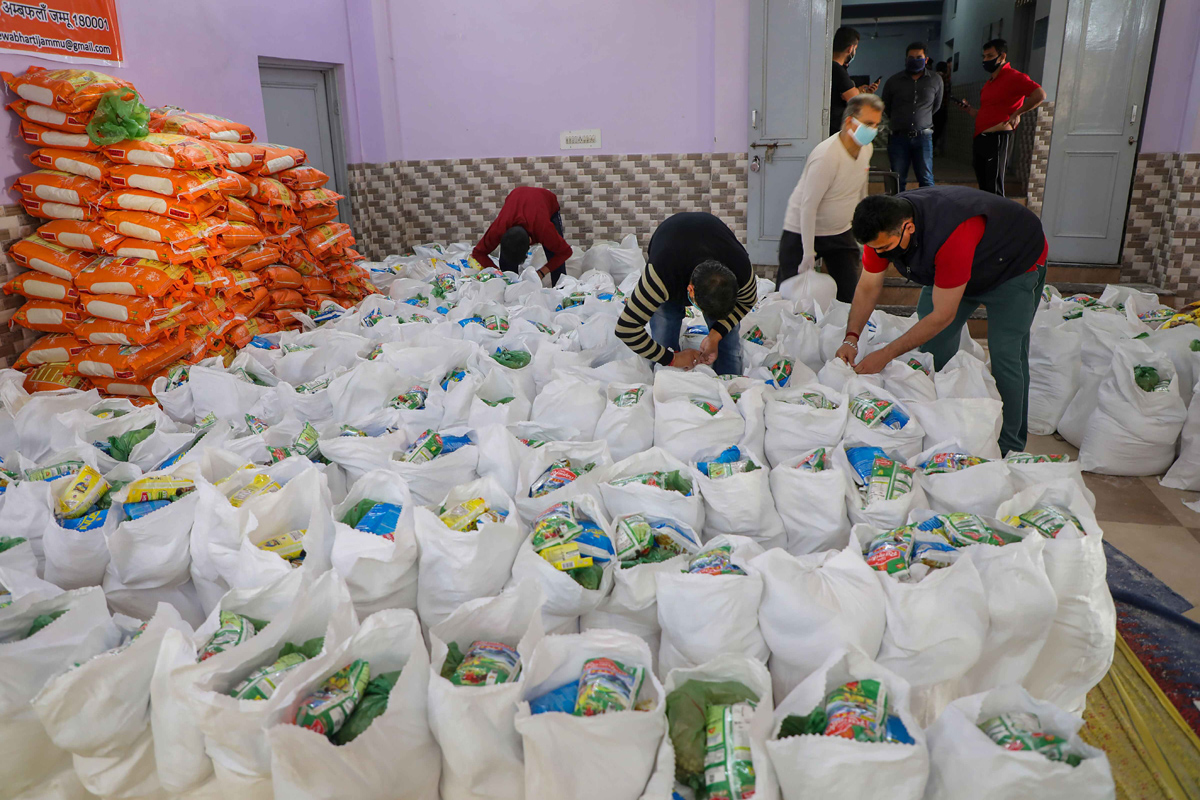The outbreak of Covid-19 has disrupted the lives of people all around the globe. People have lost their loved ones and the sources to feed their family. According to the World Economic Forum, one out of every two people has had their income decreased because of the pandemic, with individuals in lower-income nations being the hardest hit. In India, nearly 80 per cent have lost their income creating a major economic crisis. The United Nation’s State of Food Security and Nutrition has estimated the rapid increase in numbers of chronic hunger. The hunger experienced by the people is a result of unavailability of jobs and sufficient income to buy food for their family.
The pandemic has not only caused loss of income but also affected supply chains and social protection, delayed food production, decreased food availability and raised prices. India’s child malnutrition rates remain among the highest in the world. India is ranked 94th out of 107 countries on the Global Hunger Index (2020). According to the Comprehensive National Nutrition Survey (CNNS) done in 2016-18, it was found that 10, 22 and 23 per cent of the school-age children in India were found to be underweight, stunted and thin respectively. The Government of India is already making many efforts to improve the status of undernutrition, stunting, wasting and micronutrients deficiency.
The mid-day meal is the world’s largest scheme that aims to increase school enrolment and attendance, decrease dropout rates, improve primary school children’s academic performance, and most importantly, enhance their nutritional health. The Mid-Day Meal (MDM) Scheme is one of the most important programmes of the government to support 12 crore schoolchildren’s nutrition. Available literature suggests that nutrition and education are inextricably linked. A good diet and food are required to develop overall healthy well-being. Children require nutritious meals to grow and learn more effectively and quickly. Various studies have also found that MDM has improved the nutritional status of the children. However, since March 2020, there has been a closure of schools which directly influences the provision of MDM to school children.
A large number of children from poor families were dependent on MDM for having their one-two meals a day. The pandemic has caused a major breakdown in MDM distribution to the children. This will undoubtedly have a short-term and long-term impact on children’s health, education, and the economy. According to a study by Swami and Gurtoo, regular consumption of MDM reduced the chances of a child being underweight or obese or in other words; regular MDM consumption increases the chances of being in the average weight, average height, and taller categories.
During the lockdown, the Supreme Court ordered that the MDM must continue as house delivery or in the form of dry rations delivered to children’s homes or via cash transfers. However, there was found to be little work in this direction and there is lack of data in provision of meals/dry rations/cash transfer.
The MDM is an effective strategy to fill the nutrition gap in a child’s diet, especially one belonging to the vulnerable population. However, in 2020, a study conducted by UNICEF and Population Council in Bihar reported that among 794 households, less than a-third of households (29 per cent) with a child aged 6-14 years reported receiving cash in lieu of mid-day meals. IFPRI reported that upon the notice of the Supreme Court, various states have adopted different steps in MDM provision. These range from parents collecting dry ration or cash at the school to home delivery (by cooks-cum-helpers, school staff, or other frontline workers), as well as direct bank transfers and distribution at fair price shops.
Bihar is reported to provide only cash transfer; Maharashtra, Karnataka. Andhra Pradesh, West Bengal and Chhattisgarh were found to be providing food grains. Gujarat, Jharkhand, Meghalaya were found to be providing food grain as well as cash. Few states’ data was unavailable or no action on the apex court order was reported (IFPRI Report, 2020). In Delhi, it was revealed that children were only given a cash transfer for a few days in March when schools were closed, and then nothing (Iftikhar, 2020).
Implementation and actual delivery of dry ration as well as cash transfers is still open to question. The interventions adopted during Covid times need proper monitoring and evaluation for identifying the increased numbers of malnourished children in respective states. A survey was conducted by CARE India, covering 1090 children from five states (Bihar, Jharkhand, Haryana, Tamil Nadu and Uttar Pradesh) to study the impact of Covid-19 on marginalised communities, particularly in rural areas. The findings indicated that less than a third of the children (29 per cent) were receiving MDM from their school regularly. Male children (31.9 per cent) were more likely than female children to receive a Mid-day Meal (27.7 per cent). In addition, only 12 per cent of the parents of children were found to have been provided Take Home Rations. Among the states, Uttar Pradesh was found to be performing the worst in provision of MDM to children.
The battle against the pandemic is a long one and there are remote chances of full reopening of schools before mass vaccination including of children. Till then, it becomes important to make efforts to provide MDM to children to prevent the burden of malnutrition. Covid-19 has increased the requirement of strenuous efforts for rigorous distribution of MDM among children. Therefore, it is important to resume the immediate operationalisation of the scheme with best possible interventions. Efforts must be made to enrich the nutrition components of MDM. Additional funds and a strong political will are also required for proper implementation.













